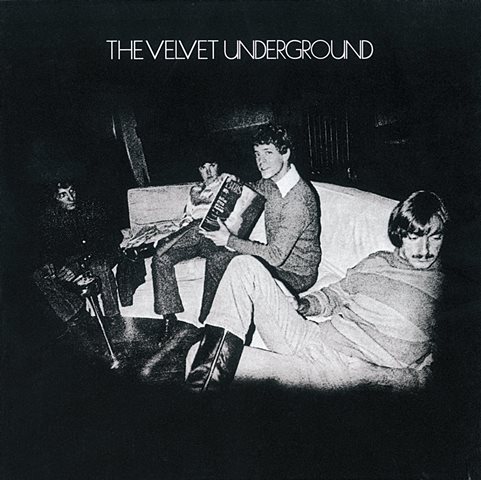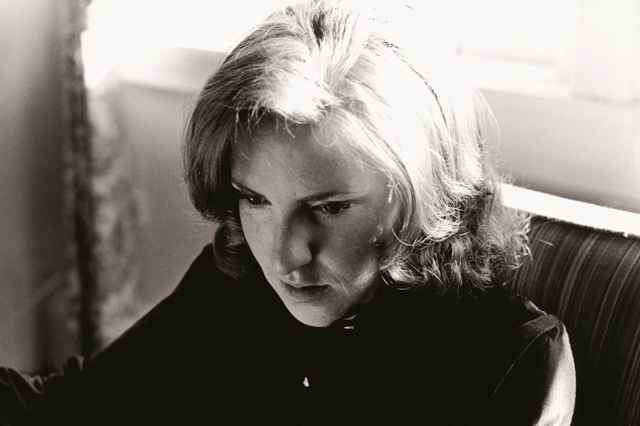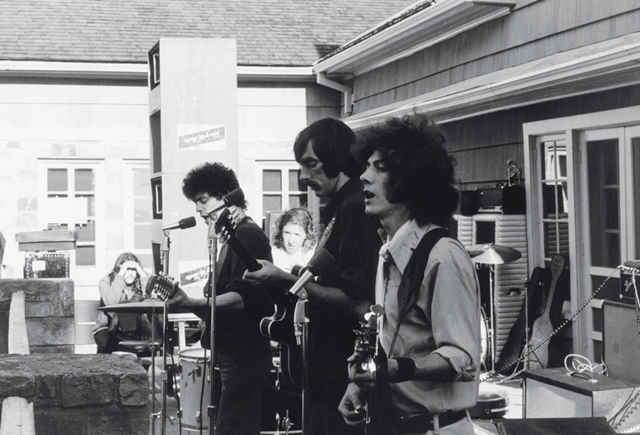Reissue CDs Weekly: The Velvet Underground | reviews, news & interviews
Reissue CDs Weekly: The Velvet Underground
Reissue CDs Weekly: The Velvet Underground
Beautifully packaged but completists-only edition of the Velvet's third album

 The Velvet Underground: The Velvet Underground Super Deluxe Edition
The Velvet Underground: The Velvet Underground Super Deluxe Edition
MGM, The Velvet Underground’s label, didn’t have a clue how to promote the band’s third album. The press kit accompanying its March 1969 release described drummer Maureen Tucker as “not your typical virgin. She looks like a red-headed music hall tart and pounds the drums with the force of a weight lifter. A female Brendan Behan.” Lou Reed was said to have “a face that arouses interest but gives no satisfaction.”
So it was no suprise that the album indeed became a poor seller and aroused little mainstream interest, which no doubt brought the band little satisfaction.
This was The Velvet Underground’s first album without John Cale and the recorded debut of his replacement, Doug Yule. Despite including Reed’s “Candy Says”, “Pale Blue Eyes”, “What Goes on”, “Beginning to See the Light” And “I’m Set Free “ – all classics – the album doesn’t resonate with the force of their debut or its follow-up, White Light/White Heat. It’s moot whether this six-disc edition will recalibrate the cultural barometer. It will probably speak to converts only. Nonetheless, it is a useful reminder that what’s usually called Third is a great album.
 Beyond reiterating that this was a new, quiet Velvet Underground which eschewed distortion and replaced it with both an intimacy previously limited to songs like “Sunday Morning” and a more direct approach to rocking – as on “What Goes on” – little needs saying about the album itself and its context as it so familiar. (Pictured left: Maureen Tucker contemplates whether she's "your typical virgin")
Beyond reiterating that this was a new, quiet Velvet Underground which eschewed distortion and replaced it with both an intimacy previously limited to songs like “Sunday Morning” and a more direct approach to rocking – as on “What Goes on” – little needs saying about the album itself and its context as it so familiar. (Pictured left: Maureen Tucker contemplates whether she's "your typical virgin")
The new 45th-anniversary version of Third brings the disc count to six by scattering the album itself across the first three discs. Disc Four is a fresh collection of the material recorded in 1969 for what is often suggested as a shelved or uncompleted fourth album – the story on this is most pithily told in the Richie Unterberger book White Light/White Heat The Velvet Underground Day by Day. The final two discs collect recordings from San Francisco’s Matrix, taped on 26 and 27 November 1969. These were, partially, the source for 1974's posthumous 1969 Velvet Underground Live album (Unterberger's book is also the best place to read the tangled story of these tapes). Despite this set's exhaustiveness, the often bootlegged radio ad for the album is not included.
For unheard and rare material, this is not a holy grail although the two live discs sound great with new, sparkling mixes and nine previously unissued performances (of 18 overall). “Heroin” is the stand-out. The band are relaxed yet have a tension which leaps out on “Beginning to See the light” and “I Can’t Stand it Anymore”. A very lengthy “Sister Ray” is hard to get through though. But beyond once again confirming that this period Velvet Underground was a fabulous band on stage, these live tracks feel like a footnote and add little to the story or legacy.
 Disc Four includes the band’s post-Third 1969 sessions: a rich source for archive releases since 1985’s VU album. This new configuration is the most satisfying yet, although there are no previously unheard takes. New mixes of unfinished recordings sit well with original 1969 mixes (some previously unissued). “Foggy Notion”, “I Can’t Stand it” and the early version of “Rock ‘n’ Roll” are unbeatable. Everything sounds better than ever and this would be a fine stand-alone release despite the familiarity of the source recordings. (Pictured right: seen live in 1969, The Velvet Underground show their direct approach to rocking)
Disc Four includes the band’s post-Third 1969 sessions: a rich source for archive releases since 1985’s VU album. This new configuration is the most satisfying yet, although there are no previously unheard takes. New mixes of unfinished recordings sit well with original 1969 mixes (some previously unissued). “Foggy Notion”, “I Can’t Stand it” and the early version of “Rock ‘n’ Roll” are unbeatable. Everything sounds better than ever and this would be a fine stand-alone release despite the familiarity of the source recordings. (Pictured right: seen live in 1969, The Velvet Underground show their direct approach to rocking)
The album itself appears as three versions, each barely different from the other. Finely honed ears are needed to discern the dissimilarities. The first is the most widely issued, in a mix by studio engineer Val Valentin. Lou Reed's mix, the so-called “closet mix” which originally surfaced on only a few hundred British pressings of the album, is on Disc Two with an inessential alternate mix of “Beginning to See the light” appended as an extra. Disc Three is curious. It’s credited as a “promotional mono mix” of the album – no mono version of album was issued in 1969 and no explanation of its source is given. The mono “What Goes on”/ “Jesus” single is added as a bonus.
Of the three configurations of Third, the previously unheard mono version is the least vibrant (though "Beginning to See the Light” is anomalously dynamic). The “closet mix” suggests Reed intended the album to sound as flat as possible, but hearing this rarity with its alternate take of “Murder Mystery” is no revelation as it appeared in full on the 1995 Peel Slowly and See box set. With its rounded timbre, the Val Valentin version remains the best.
This beautiful package comes as a case-bound book with a fine, insightful essay by Rolling Stone’s David Fricke. The illustrations are fantastic. But however the cake is cut and however essential and terrific the original album, this is for completists only.
Explore topics
Share this article
The future of Arts Journalism
You can stop theartsdesk.com closing!
We urgently need financing to survive. Our fundraising drive has thus far raised £49,000 but we need to reach £100,000 or we will be forced to close. Please contribute here: https://gofund.me/c3f6033d
And if you can forward this information to anyone who might assist, we’d be grateful.

Subscribe to theartsdesk.com
Thank you for continuing to read our work on theartsdesk.com. For unlimited access to every article in its entirety, including our archive of more than 15,000 pieces, we're asking for £5 per month or £40 per year. We feel it's a very good deal, and hope you do too.
To take a subscription now simply click here.
And if you're looking for that extra gift for a friend or family member, why not treat them to a theartsdesk.com gift subscription?
more New music
 Music Reissues Weekly: Sly and the Family Stone - The First Family: Live At Winchester Cathedral 1967
Must-have, first-ever release of the earliest document of the legendary soul outfit
Music Reissues Weekly: Sly and the Family Stone - The First Family: Live At Winchester Cathedral 1967
Must-have, first-ever release of the earliest document of the legendary soul outfit
 Album: Robert Plant - Saving Grace
Mellow delight from former Zep lead
Album: Robert Plant - Saving Grace
Mellow delight from former Zep lead
 Brìghde Chaimbeul, Round Chapel review - enchantment in East London
Inscrutable purveyor of experimental Celtic music summons creepiness and intensity
Brìghde Chaimbeul, Round Chapel review - enchantment in East London
Inscrutable purveyor of experimental Celtic music summons creepiness and intensity
 Album: NewDad - Altar
The hard-gigging trio yearns for old Ireland – and blasts music biz exploitation
Album: NewDad - Altar
The hard-gigging trio yearns for old Ireland – and blasts music biz exploitation
 First Person: Musician ALA.NI on how thoughts of empire and reparation influenced a song
She usually sings about affairs of the heart - 'TIEF' is different, explains the star
First Person: Musician ALA.NI on how thoughts of empire and reparation influenced a song
She usually sings about affairs of the heart - 'TIEF' is different, explains the star
 Album: The Divine Comedy - Rainy Sunday Afternoon
Neil Hannon takes stock, and the result will certainly keep his existing crowd happy
Album: The Divine Comedy - Rainy Sunday Afternoon
Neil Hannon takes stock, and the result will certainly keep his existing crowd happy
 Music Reissues Weekly: Robyn - Robyn 20th-Anniversary Edition
Landmark Swedish pop album hits shops one more time
Music Reissues Weekly: Robyn - Robyn 20th-Anniversary Edition
Landmark Swedish pop album hits shops one more time
 Album: Twenty One Pilots - Breach
Ohio mainstream superstar duo wrap up their 10 year narrative
Album: Twenty One Pilots - Breach
Ohio mainstream superstar duo wrap up their 10 year narrative
 Album: Ed Sheeran - Play
A mound of ear displeasure to add to the global superstar's already gigantic stockpile
Album: Ed Sheeran - Play
A mound of ear displeasure to add to the global superstar's already gigantic stockpile
 Album: Motion City Soundtrack - The Same Old Wasted Wonderful World
A solid return for the emo veterans
Album: Motion City Soundtrack - The Same Old Wasted Wonderful World
A solid return for the emo veterans
 Album: Baxter Dury - Allbarone
The don diversifies into disco
Album: Baxter Dury - Allbarone
The don diversifies into disco
 Album: Yasmine Hamdan - I Remember I Forget بنسى وبتذكر
Paris-based Lebanese electronica stylist reacts to current-day world affairs
Album: Yasmine Hamdan - I Remember I Forget بنسى وبتذكر
Paris-based Lebanese electronica stylist reacts to current-day world affairs

Add comment